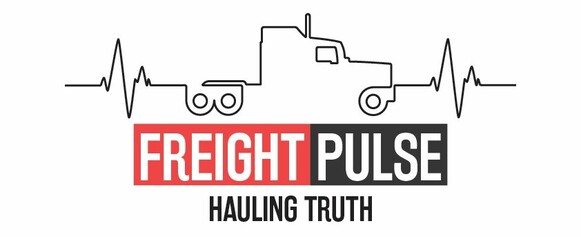The trucking industry has been in the spotlight recently, with claims and data suggesting significant shifts in the freight market. One bold assertion from Freight Waves has caught attention: “The great freight recession is officially over.” Let’s delve into the details and assess what this means for the industry.
Freight Waves Bold Claim. Market Recovery Signals
Freight Waves recently reported a significant uptick in tender rejections, surpassing 6%-a threshold they interpret as a sign of market tightening. This indicates carriers may have more control over load selection, potentially marking a shift toward a stronger market.
A 6% rejection rate suggests improved leverage for carriers in choosing loads. Also, contract carriers are now earning closer to spot market rates, raising questions about the drivers behind the rejections. Possible factors include worsening weather, higher expenses, downsizing, or better offers elsewhere.
Capacity Challenges, Regulations and Driver Losses
Capacity remains a hot topic, with over 10,000 MC (Motor Carrier) numbers lost in the past year. The upcoming implementation of FMCSA Clearing House regulations could result in as many as 177,000 truck drivers losing their CDLs, significantly impacting industry capacity.
Economic Influences – Interest Rate Cuts and Consumer Impact
The Federal Reserve’s recent interest rate cuts totaling 75 basis points aim to stimulate spending. However, the actual savings for consumers appear minimal.
$3/month saved on a $5,000 balance.
Personal loans and auto loans, savings of $3-$12 per month for average balances.
While rate cuts provide hope, their practical effect on consumer purchasing power and by extension, freight volumes may be limited.
Immigration plays a significant role in the trucking industry, with 20% of drivers being immigrants. Freight Waves highlighted concerns about drivers operating with international licenses or falsified documents. This raises questions about enforcement and its potential impact on industry capacity.
The Role of Sentiment. Policy uncertainty and industry decisions, sentiment surrounding recent elections and proposed policies significantly influences trucking industry projections. Whether operators choose to expand or contract their businesses depends on their outlook:
Positive Outlook– Expansion and increased capacity.
Negative Outlook– Downsizing and operational reductions.
Sentiment-driven actions will ultimately shape future capacity and rates.
Tariffs and their impact on importers and trucking are another major concern. Importers have three options to navigate the increased costs:
-Absorb tariffs to stabilize consumer prices.
-Shift production to countries with favorable trade agreements.
-Pass costs to consumers.
Each response could ripple through the trucking industry, influencing freight volumes and rates.
Challenges and Opportunities
The trucking industry faces a complex mix of challenges and opportunities. From market recovery signals and regulatory changes to economic policies and immigration issues, the landscape is anything but static. Industry players must adapt to these changes while remaining vigilant about potential new developments.
Challenges:
Regulatory Changes – New FMCSA Clearing House regulations could significantly reduce driver availability, creating potential capacity shortages.
Economic Pressures – Rising operational costs and minimal consumer savings from interest rate cuts strain the financial resilience of carriers.
Immigration Policies – Enforcement of stricter documentation rules could lead to workforce disruptions, further straining capacity.
Market Volatility – Fluctuations in spot and contract rates, alongside unpredictable rejection patterns, make it harder for operators to plan effectively.
Opportunities:
Market Tightening – With increasing tender rejections, carriers might gain more control over rates and load selection.
Innovation and Efficiency – Companies that invest in technology and data-driven strategies can streamline operations and reduce costs.
Adapting to Demand – Shifting consumer preferences and economic recovery could open new freight opportunities, particularly in e-commerce and last-mile delivery.
Policy Adaptation – Operators who proactively adapt to new regulations and policies may find themselves better positioned to capture market share.
The interplay between these challenges and opportunities will shape the trucking industry’s future. Resilience, adaptability, and strategic planning will be key for businesses navigating this dynamic landscape.
Join the Conversation
How do you perceive these shifts in the freight market? What trends are you noticing in your operations? Share your insights and predictions in the comments below. Let’s navigate the future of trucking together.

